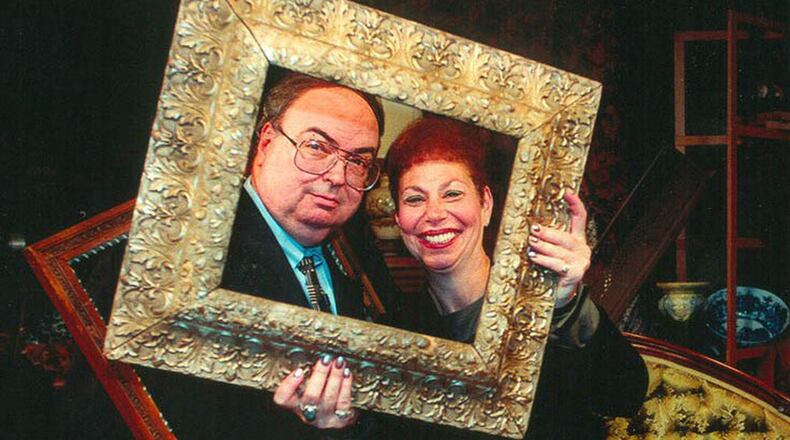Dear Helaine and Joe:
I am attaching two pictures of a glass basket that I purchased at auction several years ago. Would greatly appreciate any information you might have concerning its age, manufacturer, where it was made, type of glass, type of design, value and so forth.
Thank you,
T. R., Lamar, AK
Dear T. R.:
We have all the information we need to answer this question — except one. We do not know the size, and that will prohibit us from giving more than a qualified opinion.
For the purposes of this answer, we are going on the assumption (rightly or wrongly) that the basket part of this piece is approximately the size of an orange. If it is the size of a cantaloupe, the values would be higher. If it is smaller than an orange, the value discussed at the end would only be slightly less.
This is really a lovely piece of late 19th century art glass. The base glass seen in the basket, the leaf feet and the thorn handle is called “Vaseline” glass. This type of glass, which was made using a small amount of uranium oxide, has a yellowish to yellow-green color with a slightly oily looking surface that reminds some of petroleum jelly – thus the popular name.
Vaseline glass has been made (reportedly) since the 1840s, but most of the glass with this coloration that is encountered by collectors was made post-1870, with reproductions having been made until very recent times. Real “Vaseline” glass should fluoresce in ultraviolet light. T. R. should not worry about the presence of uranium in her basket (it is not harmful), and she should not worry that this is a reproduction.
The piece was manufactured probably in the 1880s or 1890s, somewhere in the Bohemian region (modern Czech Republic) of central Europe and is a very fine example of late 19th century Victorian art glass. It should be noted that the beautiful ruffled cranberry opalescent rim on this piece was made using a tiny bit of arsenic, but that too is not harmful to T. R. or her family.
Exactly who the manufacturer of the piece might have been is strictly a matter of attribution, but some would suggest it might well be from the Harrach Glass Works, Harrachov, Czech Republic. We, however, will not be dwelling on this because such an attribution would be open to debate. With all that said, all T. R.’s questions have been addressed except one: the value.
There was a time when Victorian art glass baskets were eagerly sought after by myriads of collectors who enjoyed their beauty, rainbow of colors and vast variety of styles. Unfortunately, recent years have seen a general decline in interest, but there is still a pool of enthusiasts who seek these out whenever they come on the market for sale.
Many might say the piece is just too “grandmotherly” to find a place in modern homes, but we think it is lovely and a fine example of hand-blown glassware. But, prices have declined in recent years and if the piece is of usual size, it should be valued for insurance purposes in the region of $125 to $150. If it is significantly larger, that value could soar over $500.
———
Helaine Fendelman and Joe Rosson have written a number of books on antiques. Do you have an item you'd like to know more about? Contact them at Joe Rosson, 2504 Seymour Ave., Knoxville, TN 37917, or email them at treasures@knology.net. If you'd like your question to be considered for their column, please include a high-resolution photo of the subject, which must be in focus, with your inquiry.
About the Author
Keep Reading
The Latest
Featured

